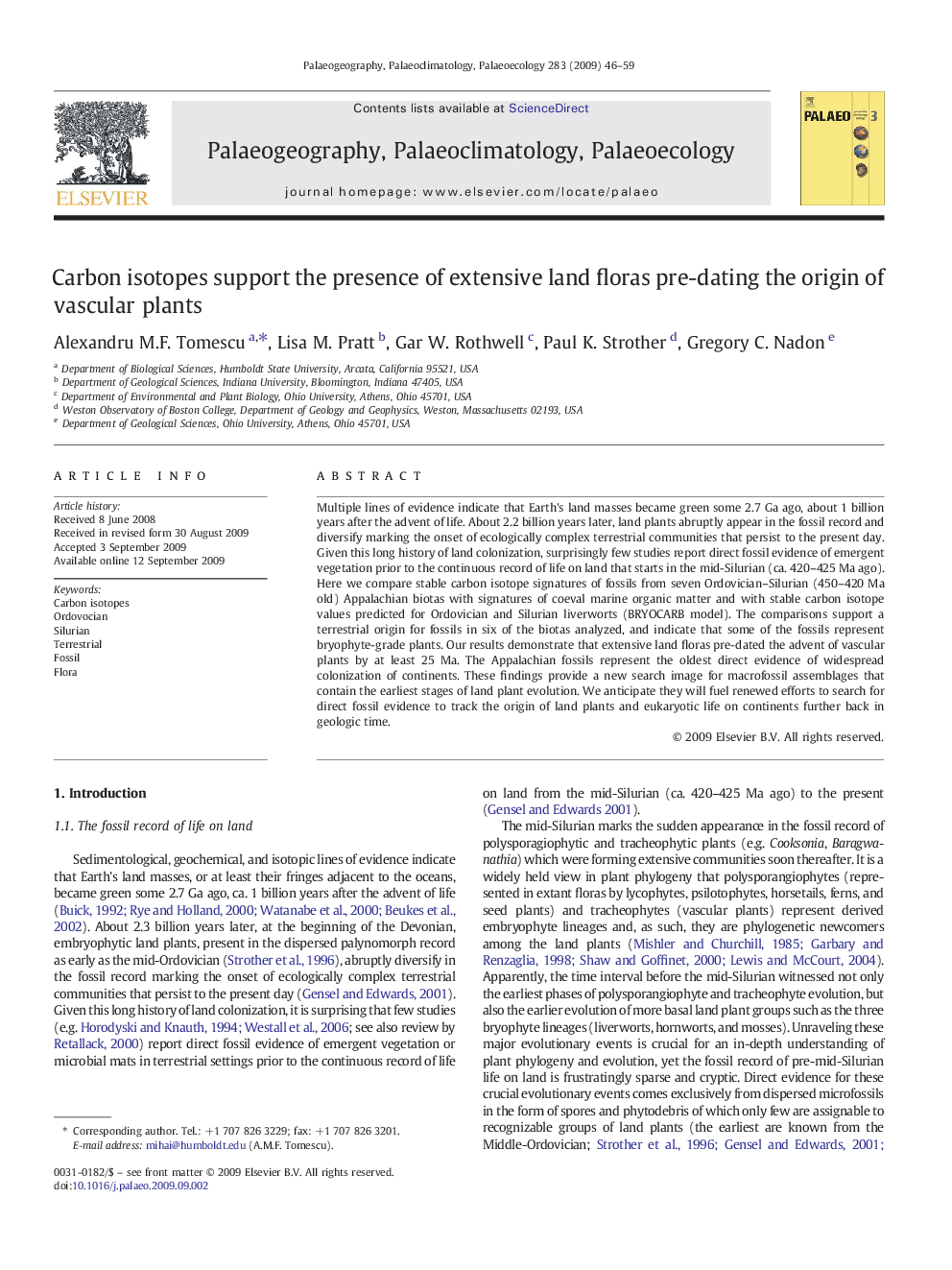| Article ID | Journal | Published Year | Pages | File Type |
|---|---|---|---|---|
| 4467979 | Palaeogeography, Palaeoclimatology, Palaeoecology | 2009 | 14 Pages |
Multiple lines of evidence indicate that Earth's land masses became green some 2.7 Ga ago, about 1 billion years after the advent of life. About 2.2 billion years later, land plants abruptly appear in the fossil record and diversify marking the onset of ecologically complex terrestrial communities that persist to the present day. Given this long history of land colonization, surprisingly few studies report direct fossil evidence of emergent vegetation prior to the continuous record of life on land that starts in the mid-Silurian (ca. 420–425 Ma ago). Here we compare stable carbon isotope signatures of fossils from seven Ordovician–Silurian (450–420 Ma old) Appalachian biotas with signatures of coeval marine organic matter and with stable carbon isotope values predicted for Ordovician and Silurian liverworts (BRYOCARB model). The comparisons support a terrestrial origin for fossils in six of the biotas analyzed, and indicate that some of the fossils represent bryophyte-grade plants. Our results demonstrate that extensive land floras pre-dated the advent of vascular plants by at least 25 Ma. The Appalachian fossils represent the oldest direct evidence of widespread colonization of continents. These findings provide a new search image for macrofossil assemblages that contain the earliest stages of land plant evolution. We anticipate they will fuel renewed efforts to search for direct fossil evidence to track the origin of land plants and eukaryotic life on continents further back in geologic time.
